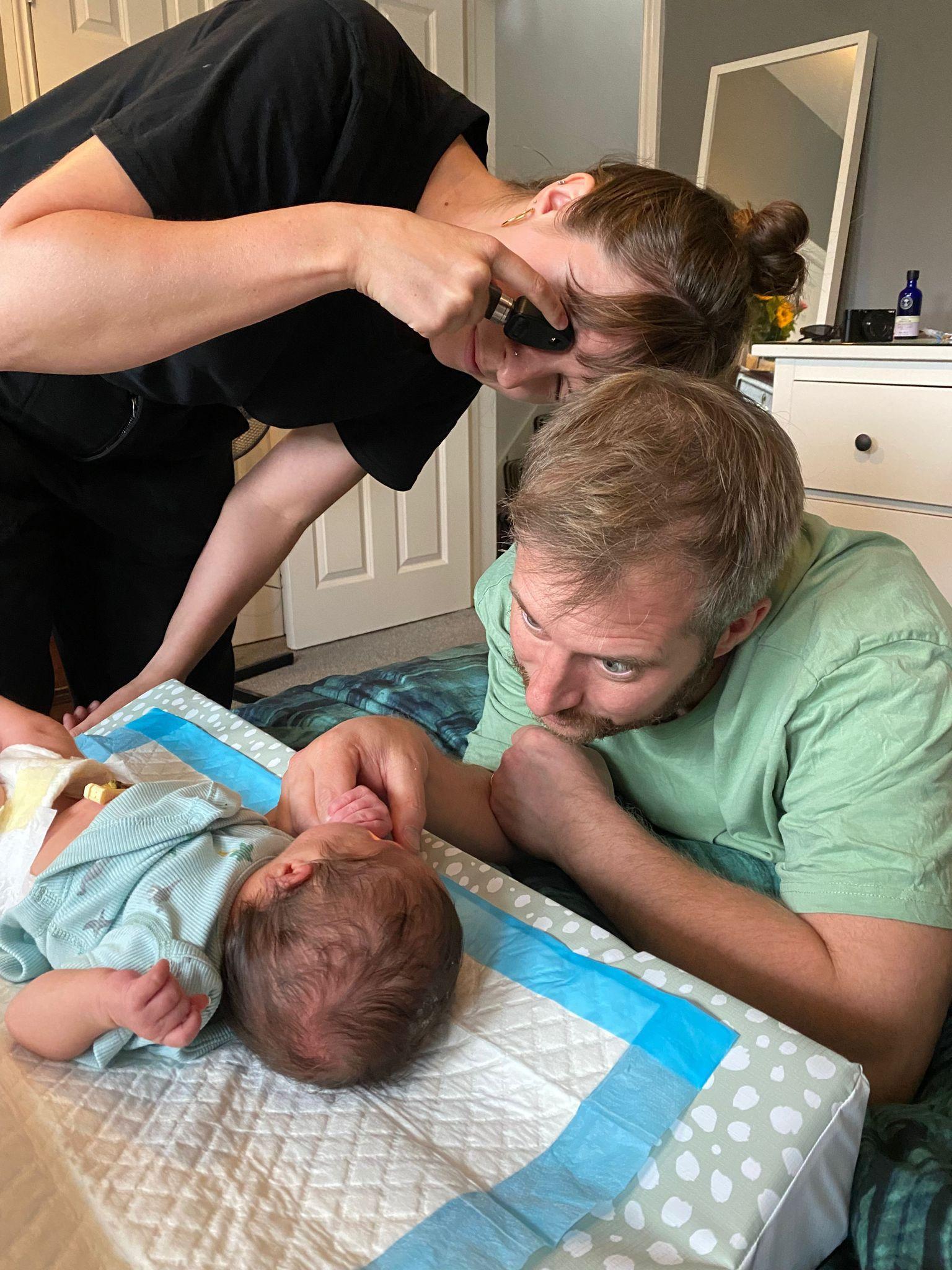What’s the newborn examination all about?
July 30, 2023
Checking the red-eye reflex at home
The Newborn and Infant Physical Examination (NIPE), also known as the Examination of the Newborn (EON) is a screening test offered to all babies with the aim of identifying and referring babies with congenital abnormalities (that are detectable), within the first 72 hours of birth. The NIPE is offered again by the GP at approximately 6 – 8 weeks of age, with the aim of further identifying any abnormalities that may present later.
The NIPE involves a specially trained midwife, neonatal doctor or GP, undertaking a thorough examination of a newborn baby – basically looking over a baby’s entire body to check for any anomalies which could be a sign of an underlying condition. It is a ‘top-to-toe’ examination where everything from the top of the baby’s head to the tip of their toes and everything in between is checked.
An important aspect of doing a NIPE is getting a thorough history prior to doing the check. This includes asking questions about the mother or birthing parent’s health and wellbeing (e.g. any pre-existing medical conditions), and the well-being of any other immediate family members – for example, siblings. It is important to check any scans from the pregnancy and to note the events of labour that may be relevant, including mode of birth. This history taking helps to inform the overall well-being of a newborn baby, and identify if any referrals to other specialists are needed. In addition to doing the physical check, NIPE practitioners will also ask about feeding and if there are any issues in this respect. They’ll also want to know if a newborn baby is passing urine and pooing as much as would be expected for their age.
Whilst a NIPE practitioner will be looking at the whole baby, there are four key areas included in the check:
- Heart – the practitioner will listen to a baby’s heartbeat to screen for congenital heart disease, which is an umbrella term meaning there is an issue with the structure or function of the heart from birth.
- Eyes – the practitioner will shine a torch into the baby’s eyes to assess for the presence of a red-eye reflex. This is to screen and detect congenital cataracts.
- Hips – the practitioner performs two manoeuvres on the baby’s hips to identify the presence of a dislocated and/or a dislocatable hip, which may be a sign of congenital hip dysplasia.
- Testes (in boy’s only!) – the practitioner palpates the testes to check that both have descended into the scrotum, this is to screen for unilateral or bilateral undescended testes.
The NIPE is a screening test, not a diagnostic test and any abnormalities identified will need further testing to make a diagnosis. The practitioner will make the appropriate referral if they identify an abnormality during the NIPE or if there the baby has known risk factors for certain conditions. The urgency of the referral depends on the findings of the NIPE and this will be discussed with parents. A baby may need to be urgently reviewed within 24 hours and another may only require follow up with the GP at the 6-8 week appointment.
If you birth in hospital, the NIPE usually takes places before you are discharged home. Some people choose to go home before it has been done and will return to the hospital the next day to have it completed. The NIPE can also be done at home – although this can depend on if there are midwives available who have been trained to do them.
Finally, it is worth noting that the NIPE is a test that parents absolutely have the right to decline. It should always be offered, with an explanation of what it involves, but it is then up to parents to make an informed choice about if they want their baby to have this screening test or not.
Click here for more information about the NIPE.
Sophie is trained to undertake the NIPE and can do this at your home, at a time that suits you. The NIPE will be offered to anyone who books with us for their pregnancy and birth care, but it can also be offered as a standalone appointment, for example if you have had a free birth or an NHS home birth.

